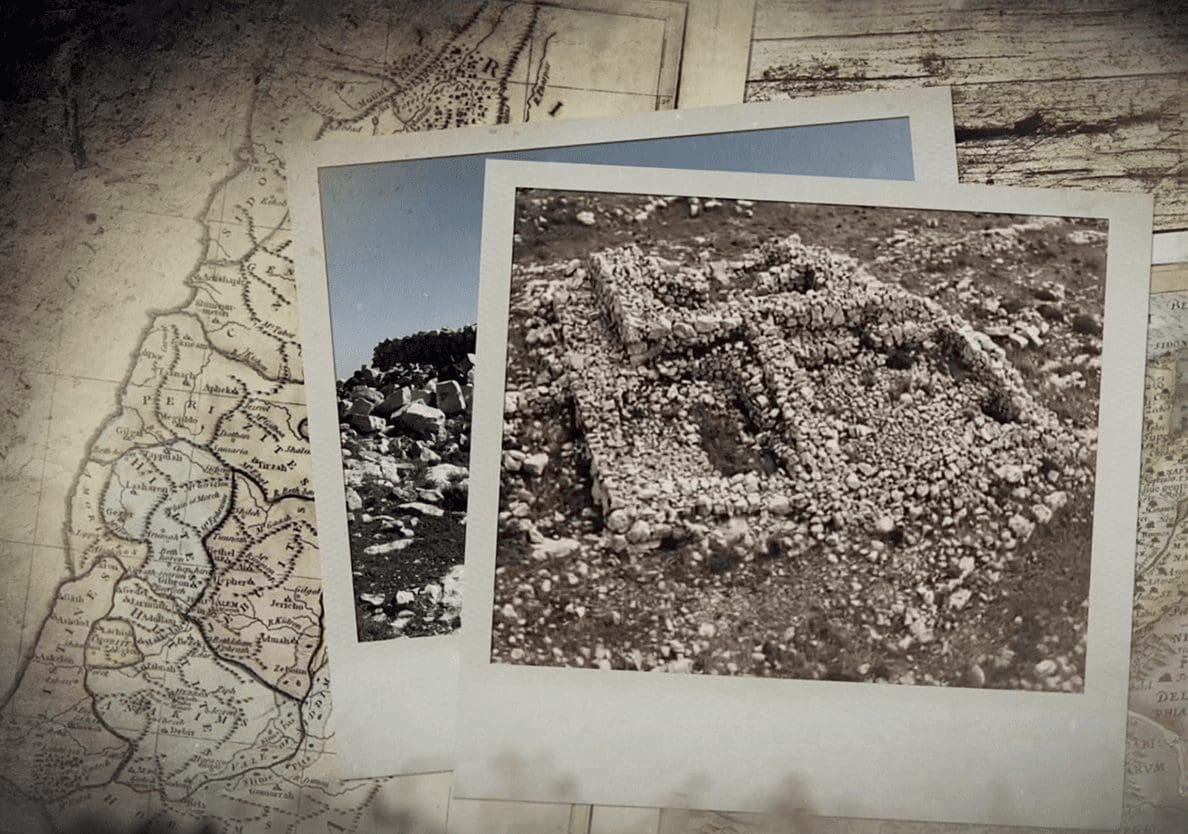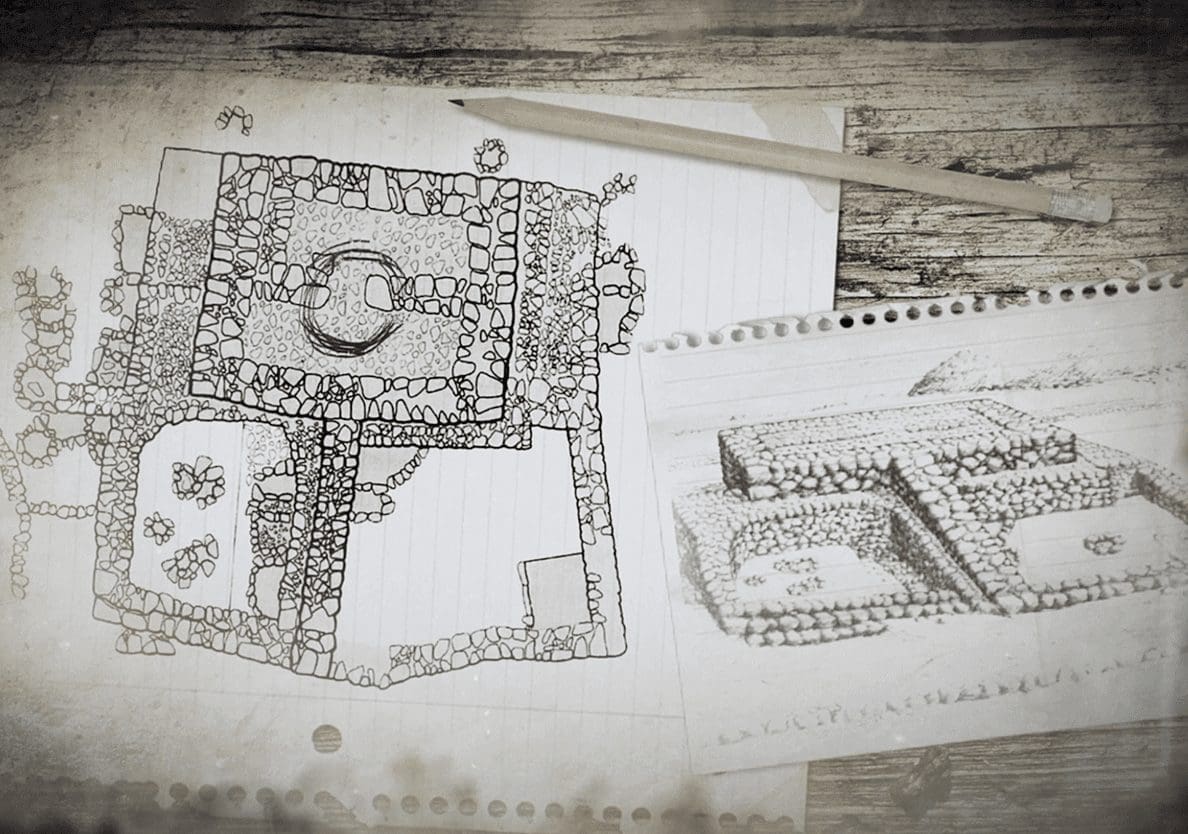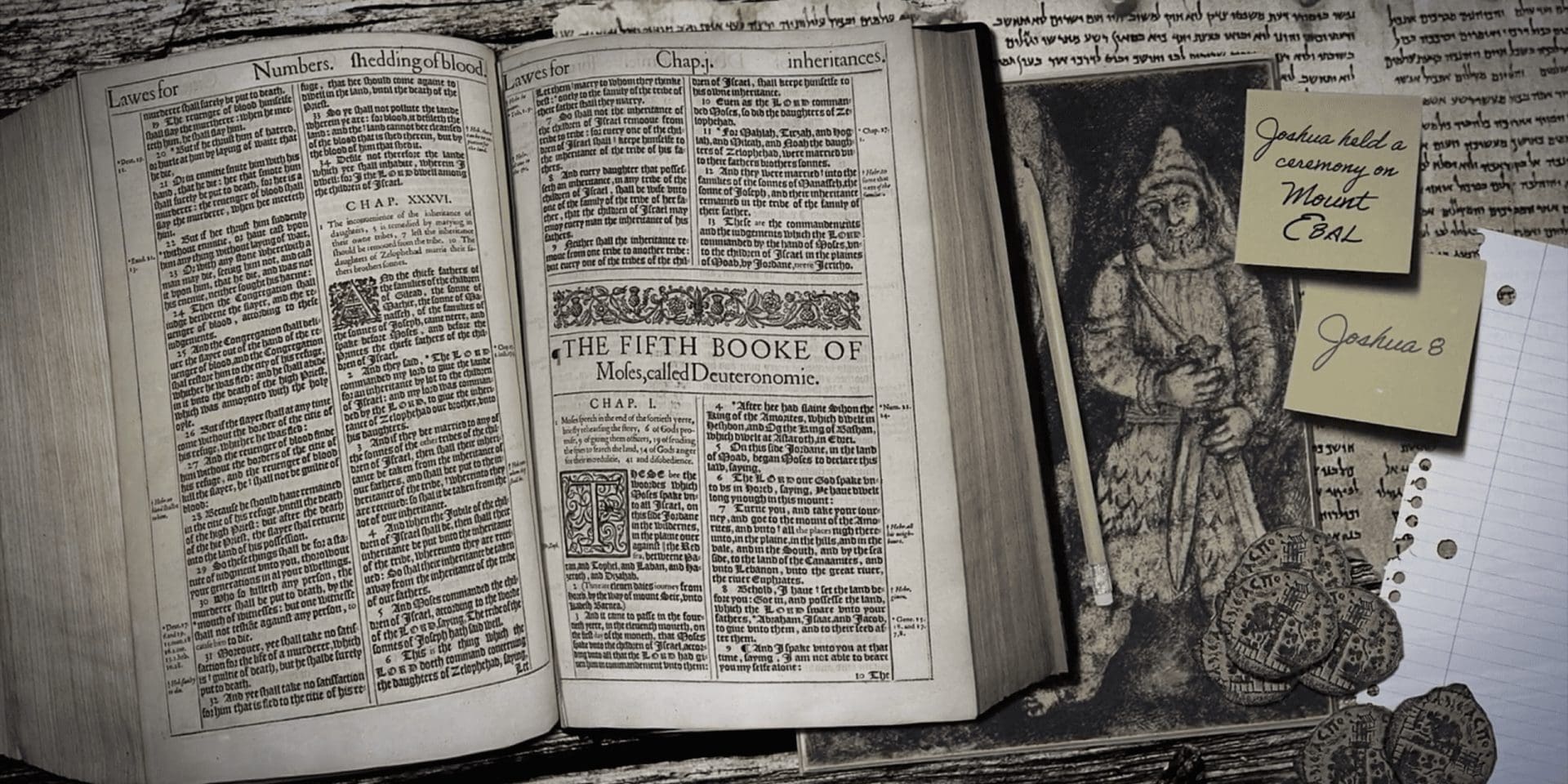The book of Deuteronomy records a command to Joshua to hold a ceremony on Mount Ebal and Mount Gerizim once Israel arrives in the Promised Land. This command focuses primarily on Mount Ebal, as it is there that Joshua is supposed to build an altar and set up standing stones that have the Law or covenant written on them. Joshua 8 records how the Israelites fulfilled this. Mount Ebal was probably chosen as a place of covenant renewal for a few reasons:
“Zertal’s findings sparked a scholarly firestorm of disagreement, but today it’s generally recognized that he has found a cultic site that corresponds to Biblical sacrificial restrictions.”
First, it flanks the city of Shechem which was a major centre of politics and religion in Canaan, in other words control of this area demonstrated God’s power to own the land.[1][2] Second Mount Ebal is the tallest mountain in northern Samaria, demonstrating importance and commanding a view of nearly all of what would become Israel. Third, most Israelite Iron Age I (1220-100BC) archaeological findings come from the territory of Manasseh where Mount Ebal lies at the heart of, which gives some evidence to believe that here was where most of Israel resided in the early settlements and into the time of the Judges (while they began to expand out and conquer more territory); so having a religious centre on Mount Ebal would give quick access to most of these early Israelites. After these mentions in Deuteronomy and Joshua, Mount Ebal is never spoken of again in the Bible.

Joshua’s altar is on top of Mount Ebal
But In modern times Mount Ebal has also received a slice of controversial fame with the findings of the late archaeologist Adam Zertal. In the 1980s, his team conducted a land survey of this territory of Manasseh, including Mount Ebal. A pile of stones on Mount Ebal (150 meters below its peak) received several seasons of excavations because of Iron Age I pottery scattered about its surface. Adam Zertal interpreted what he found beneath this pile as a massive altar of burnt offering dating to the Biblical period of the Judges.[3] At first, Zertal’s findings sparked a scholarly firestorm of disagreement, but today it’s generally recognized that he has found a cultic site that corresponds to Biblical sacrificial restrictions.[4]
The apparent altar is made of natural, uncut stones and filled with alternating layers of earth, ash, bones and stones. Not only is this a known construction style of ancient altars, the bones in the fill are ritually clean, edible animals according to the Mosaic Law.[5] There is a notable absence of unclean animal bones here that are found at contemporary sites in the area – pointing to its use as an Israelite cultic centre.[6]


Unlike pagan altars with stairs, this one was ascended via a three-foot wide, twenty-three-foot long ramp as commanded in Exodus 20:26[7]. In front of the altar are two paved courtyards and various pit installations that contained either ash and bone, or pottery vessels – these have been interpreted as holding other kinds of offerings.[8] The whole area was surrounded by two short ceremonial walls that marked off holy ground: A later closer wall, and a larger older wall.[9]
While this altar dates Biblically to a time just after Joshua, at the centre of it Zertal found an older circular altar dug into the bedrock. Could this circular installation have been what Joshua constructed (Joshua 8)? The location, timing and archaeological activity all lines up, but the Biblical connection will likely remain controversial.

Corie Bobechko is a daily co-host, speaker, and writer of Bible Discovery. She also hosts a YouTube channel that shows how history and archaeology prove the Bible. Her heart for seekers and skeptics has led her to seek truth and share it with others. Corie also has a Bachelor of Theology from Canada Christian College.
[1] Sandra Ritcher, The Deuteronomistic History and the Name Theology : Leshakken Shemo Sham in the Bible and the Ancient Near East, De Gruyter, 2002.
[2] Sandra Ritcher, Could Mt. Ebal Be Deuteronomy’s “Place of the Name”?, BAR, https://www.baslibrary.org/videos/could-mt-ebal-be-deuteronomys-place-name
[3] Adam Zertal, Has Joshua’s Altar Been Found on Mt Ebal?, Biblical Archaeology Review, January/February 1985.
[4] Ralph K. Hawkins, Israelite Footprints, Biblical Archaeology Review, March/April 2016.
[5] 3000 animal bones discovered, 96% of which come from Levitical list of clean offerings, all of which are biblically edible (bull, sheep, goat, fallow deer)
[6]Adam Zertal, Has Joshua’s Altar Been Found on Mt Ebal?, Biblical Archaeology Review, January/February 1985.
[7] 23-feet wide processional entrance with 3 steps going through the later boundary wall. Preserved to a height of 9-feet tall based on ramp height only 1 layer of stones is missing, originally would have been 10-feet tall.
[8] Zertal, 1985.
[9] Zertal, 1985.






